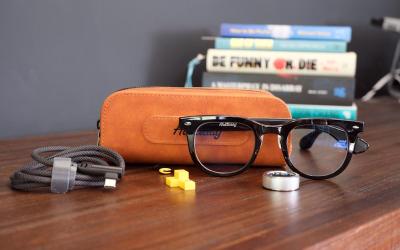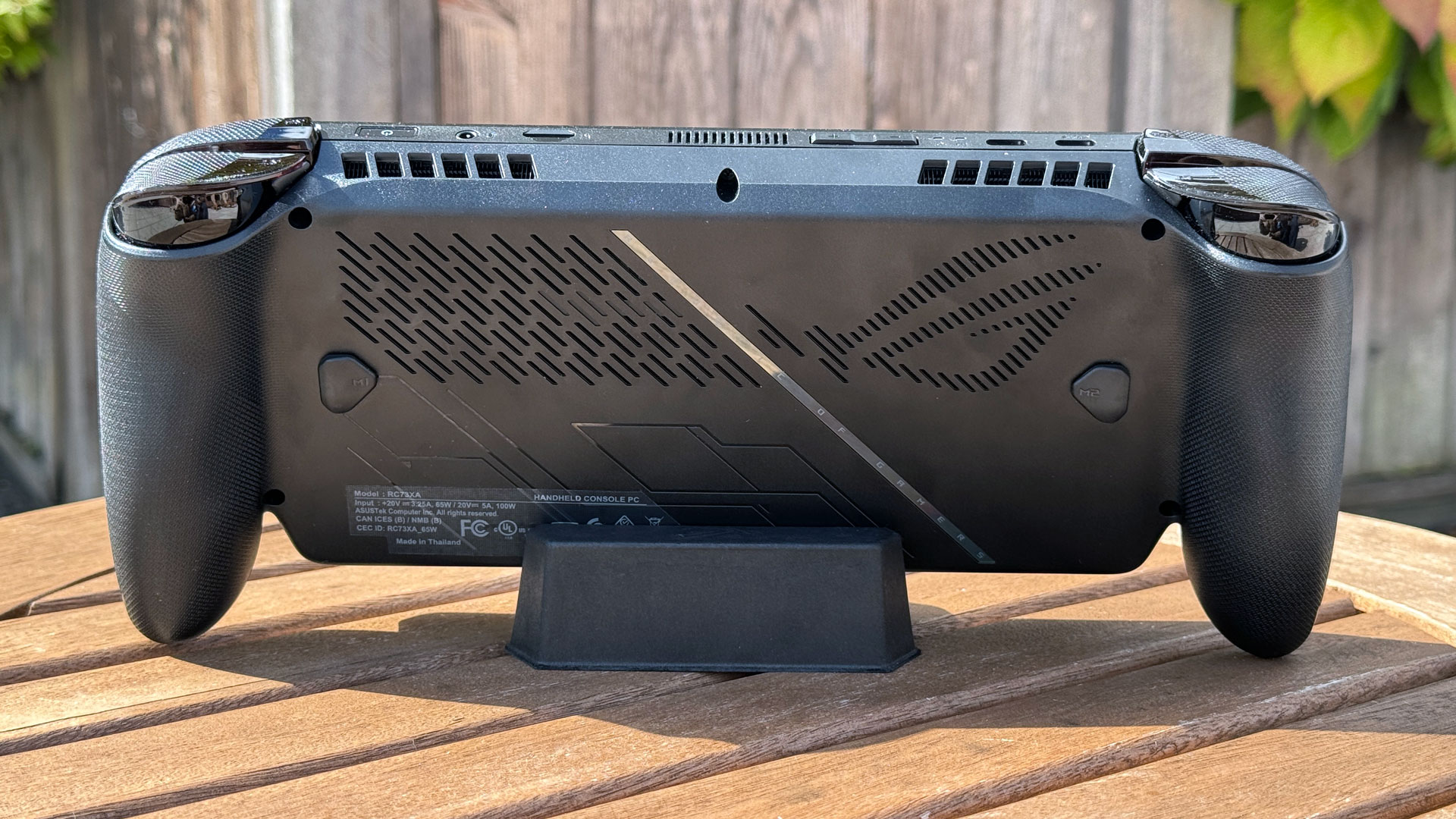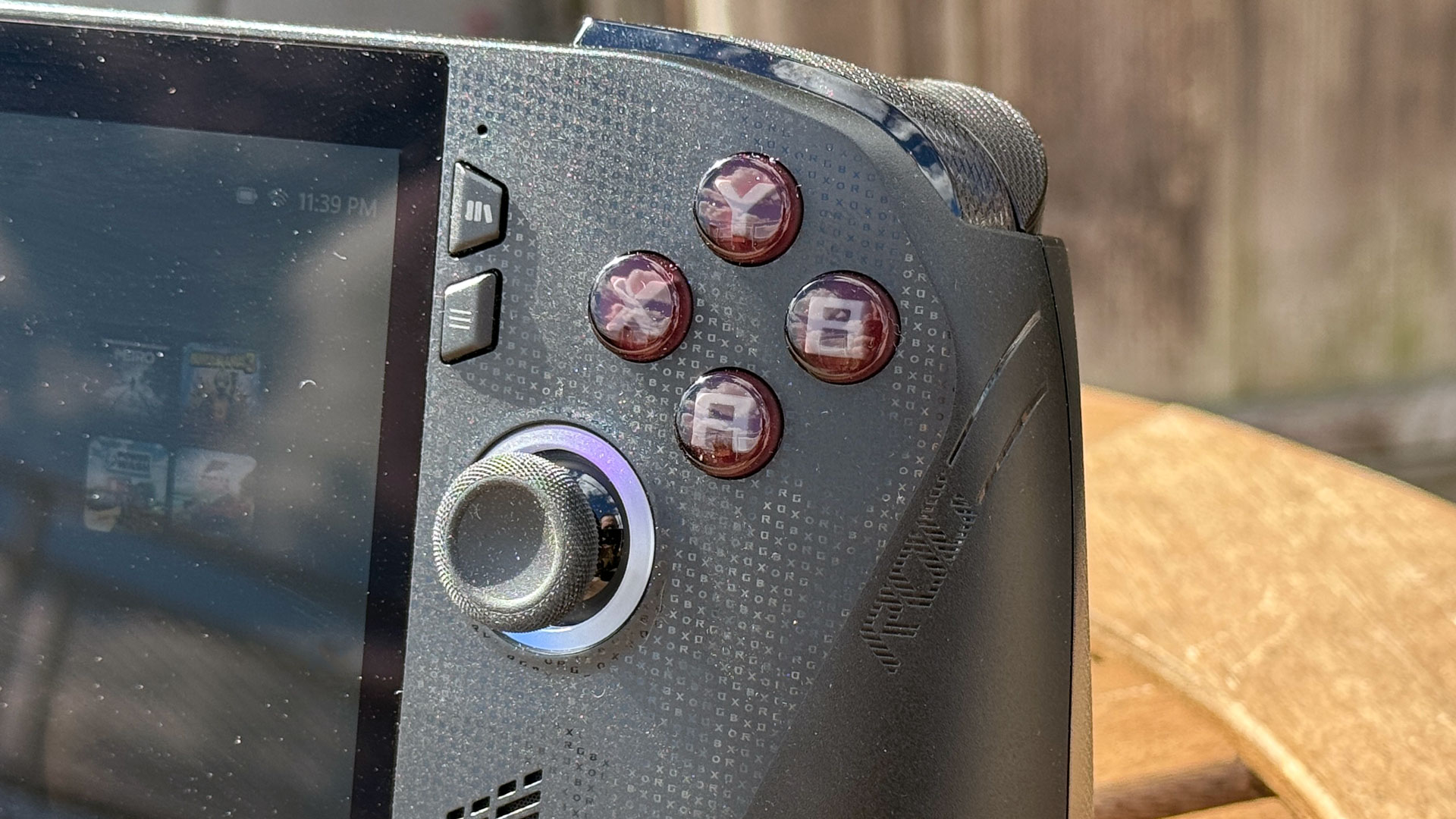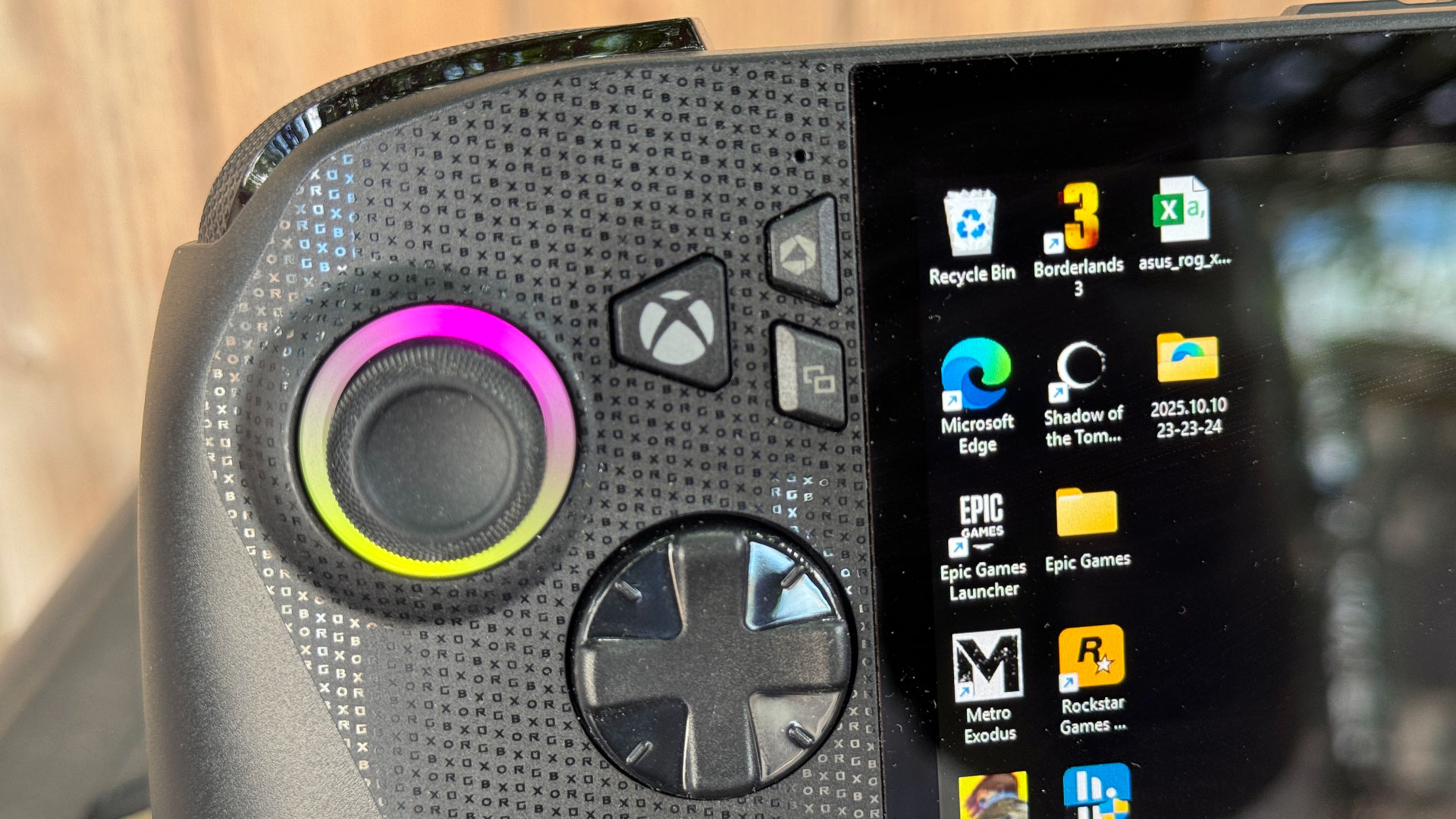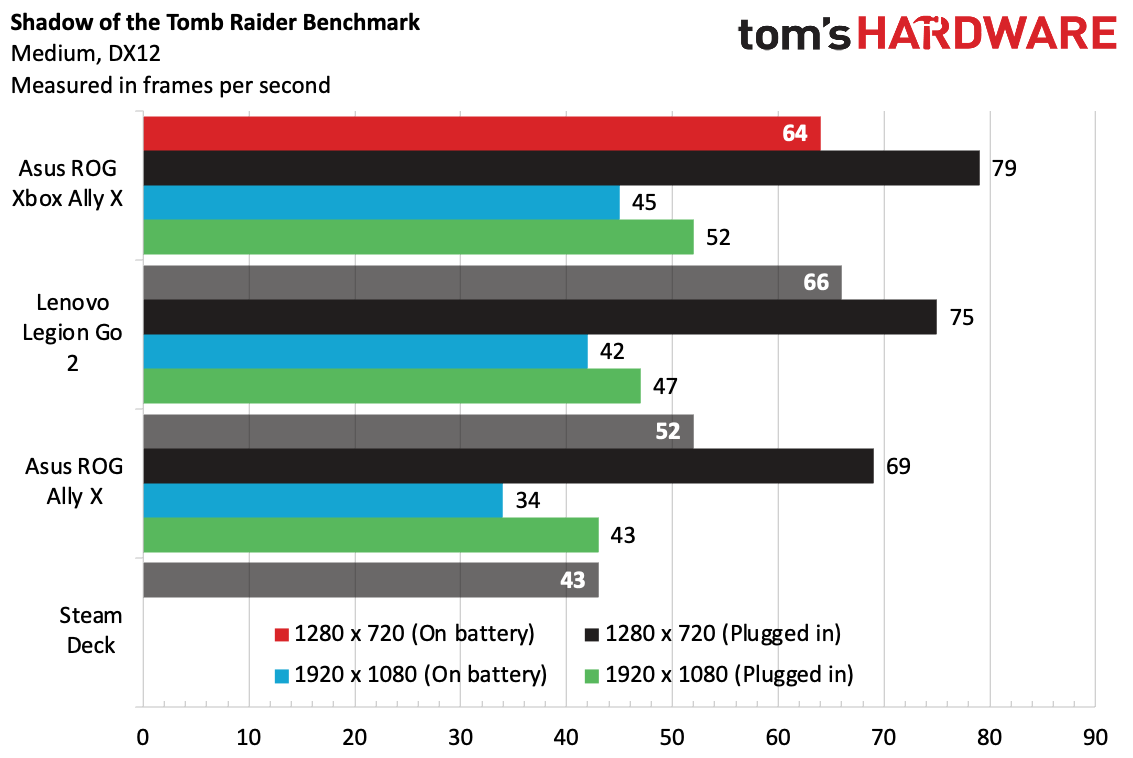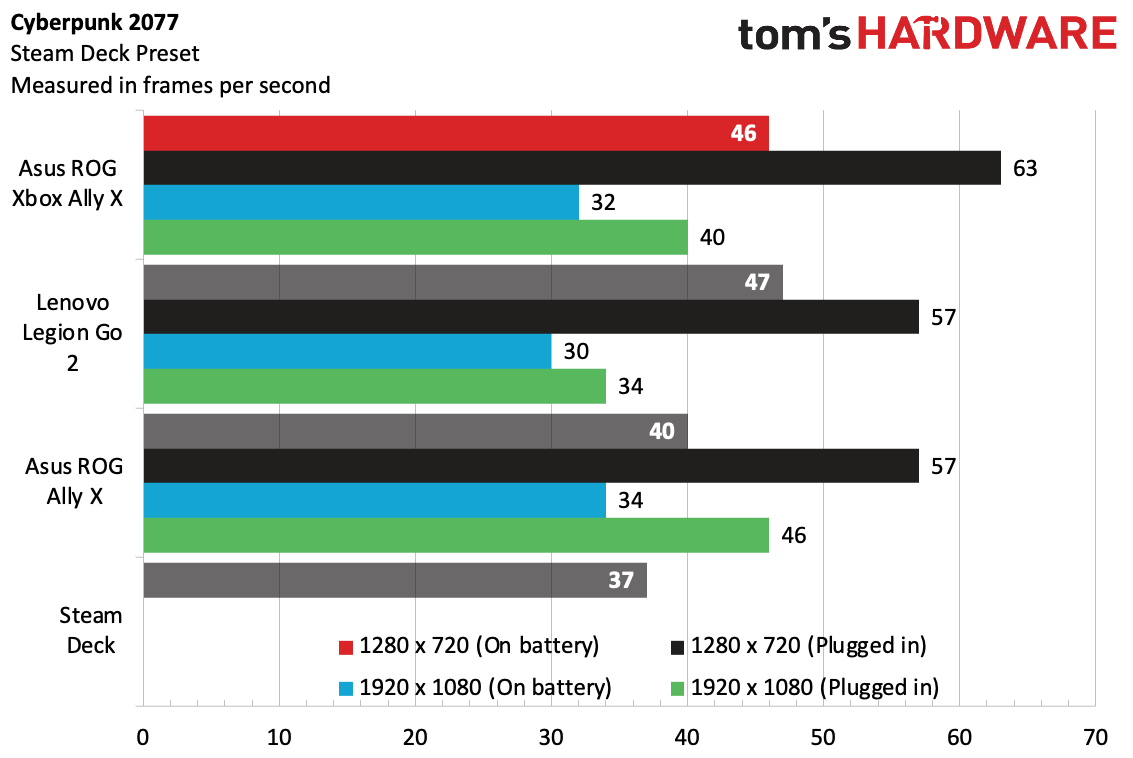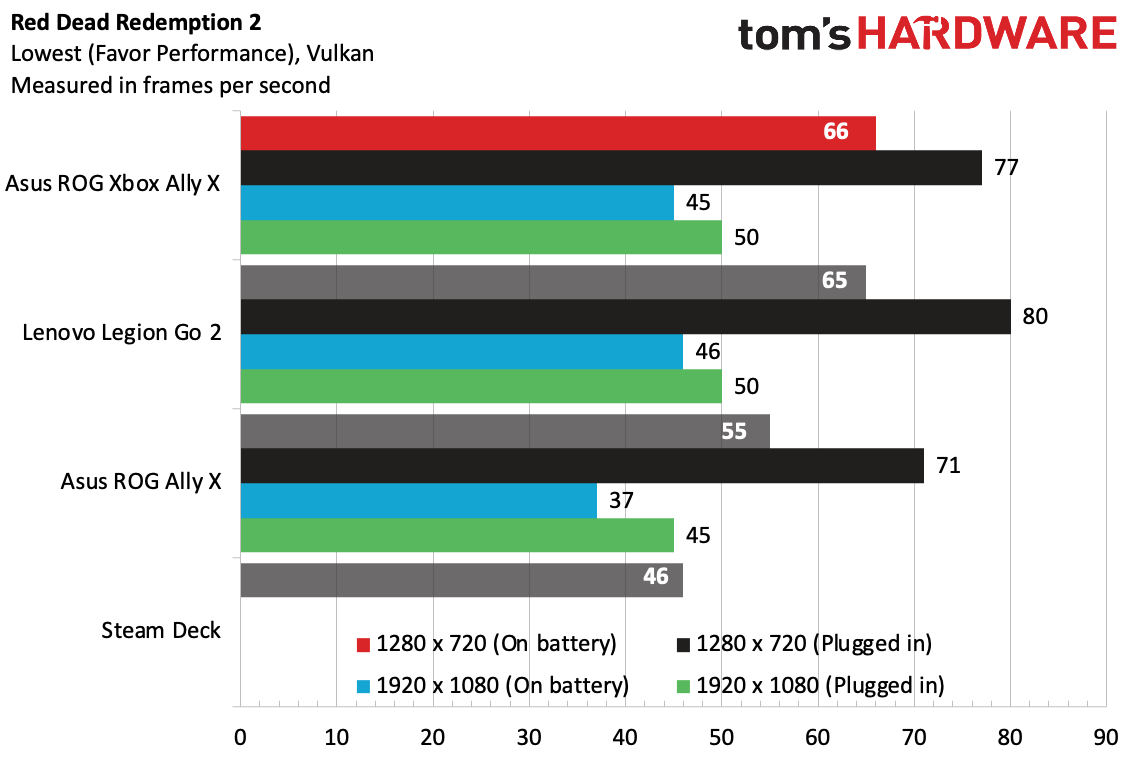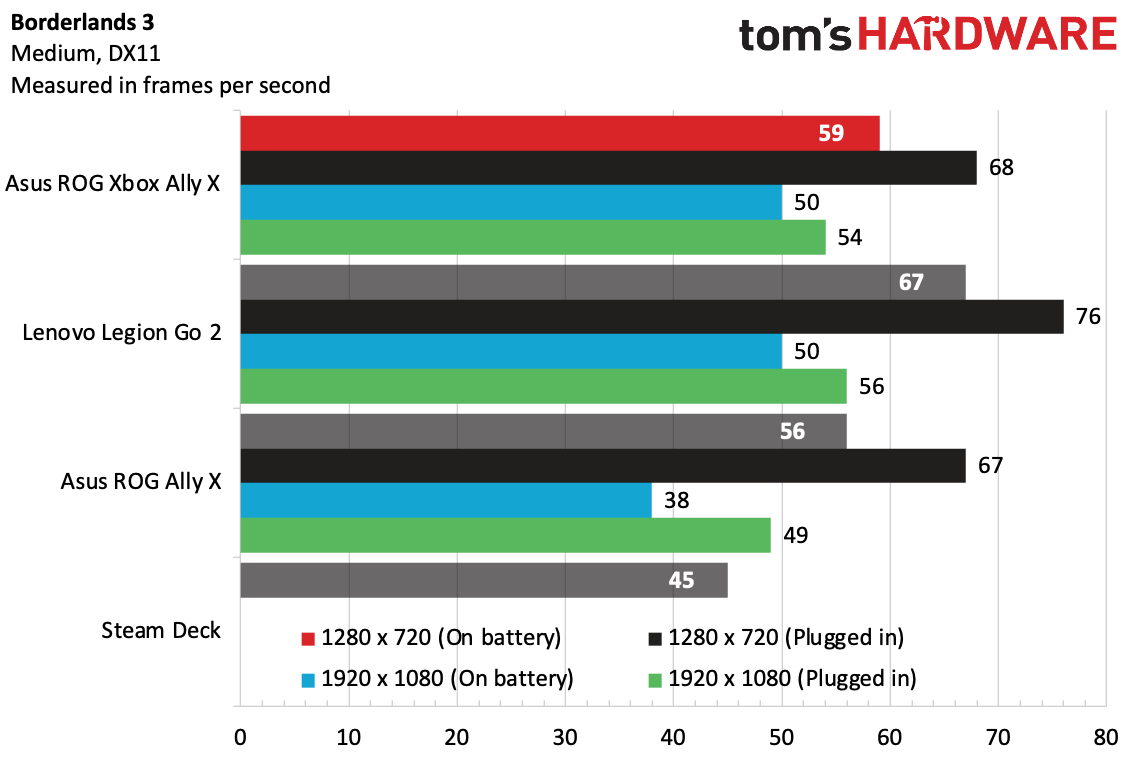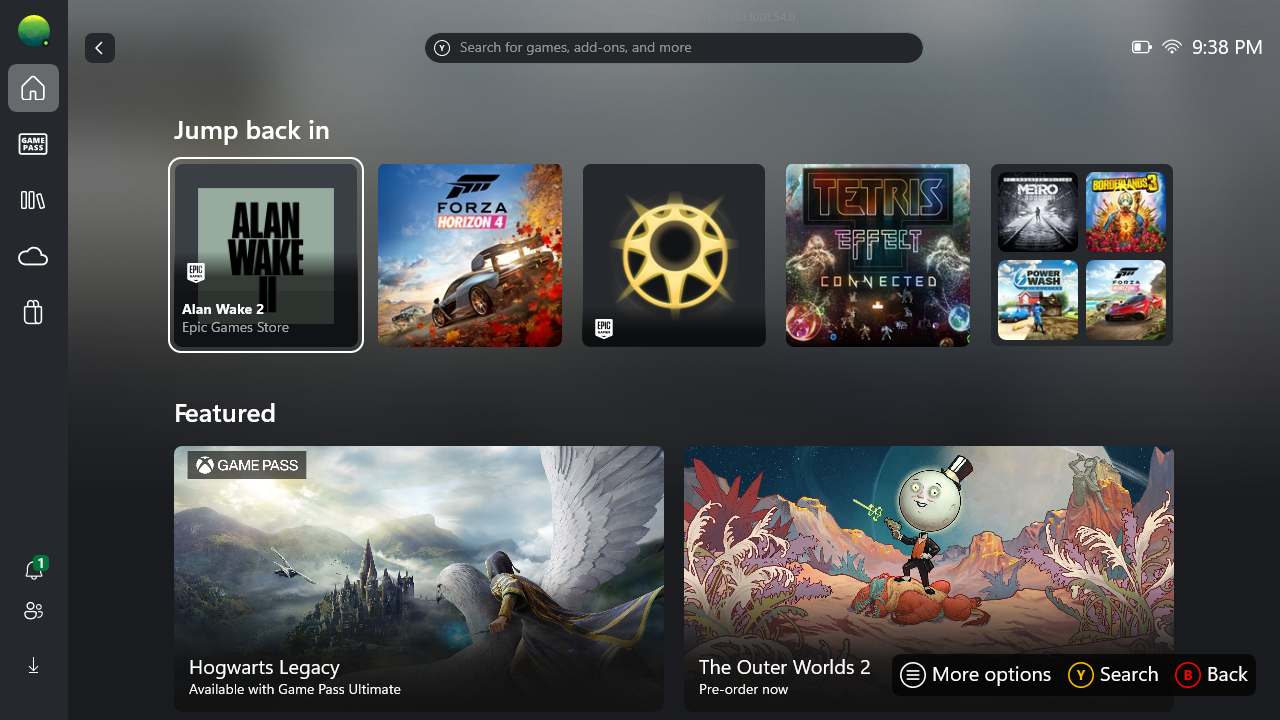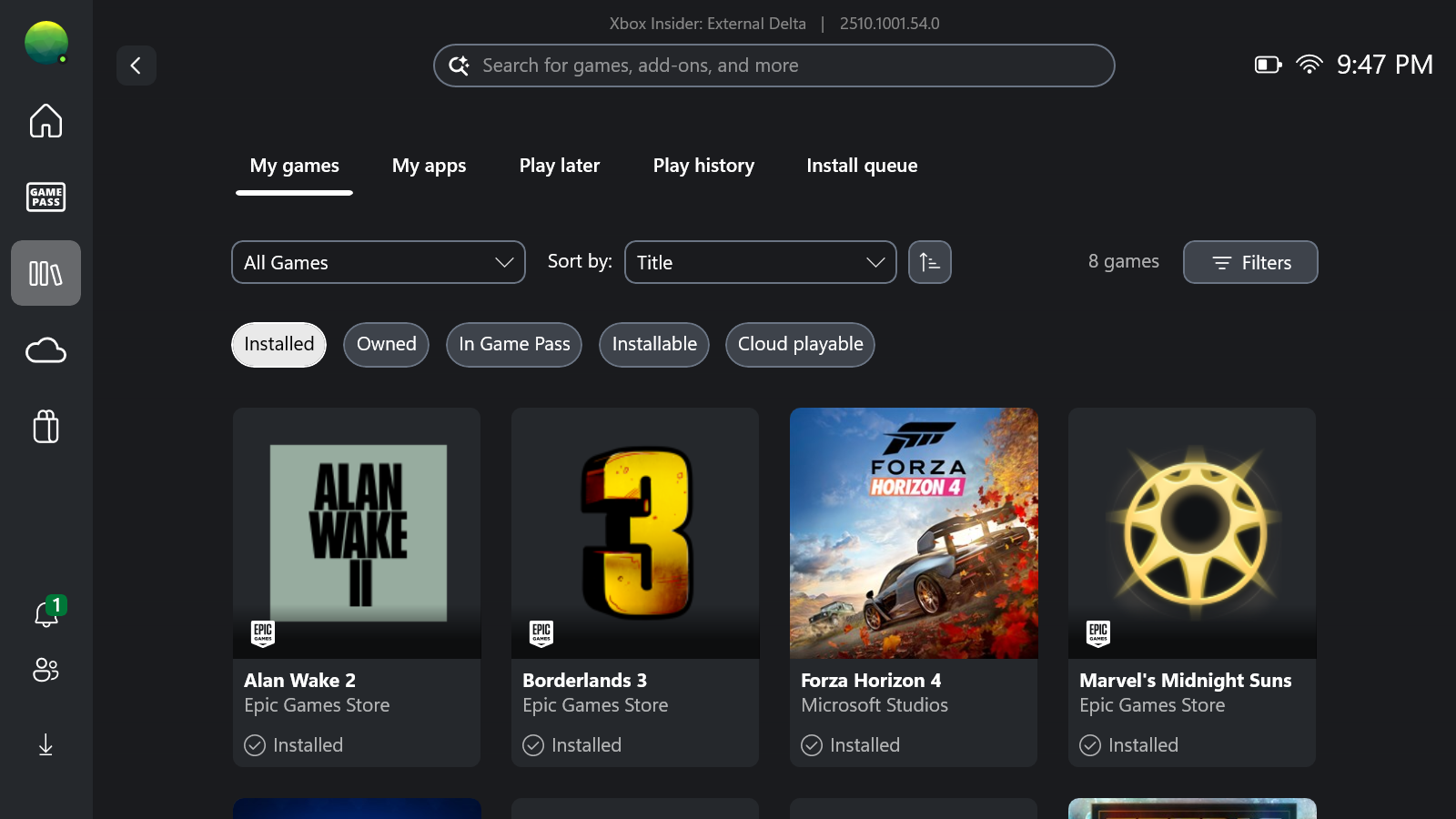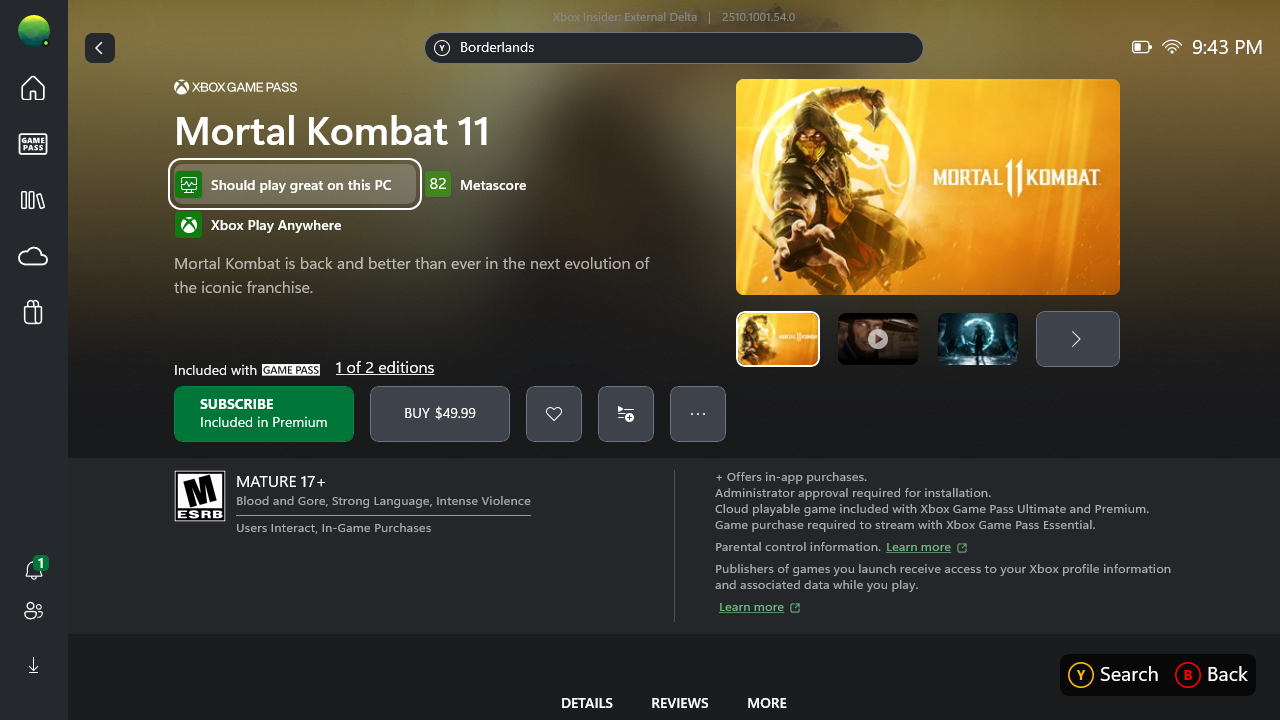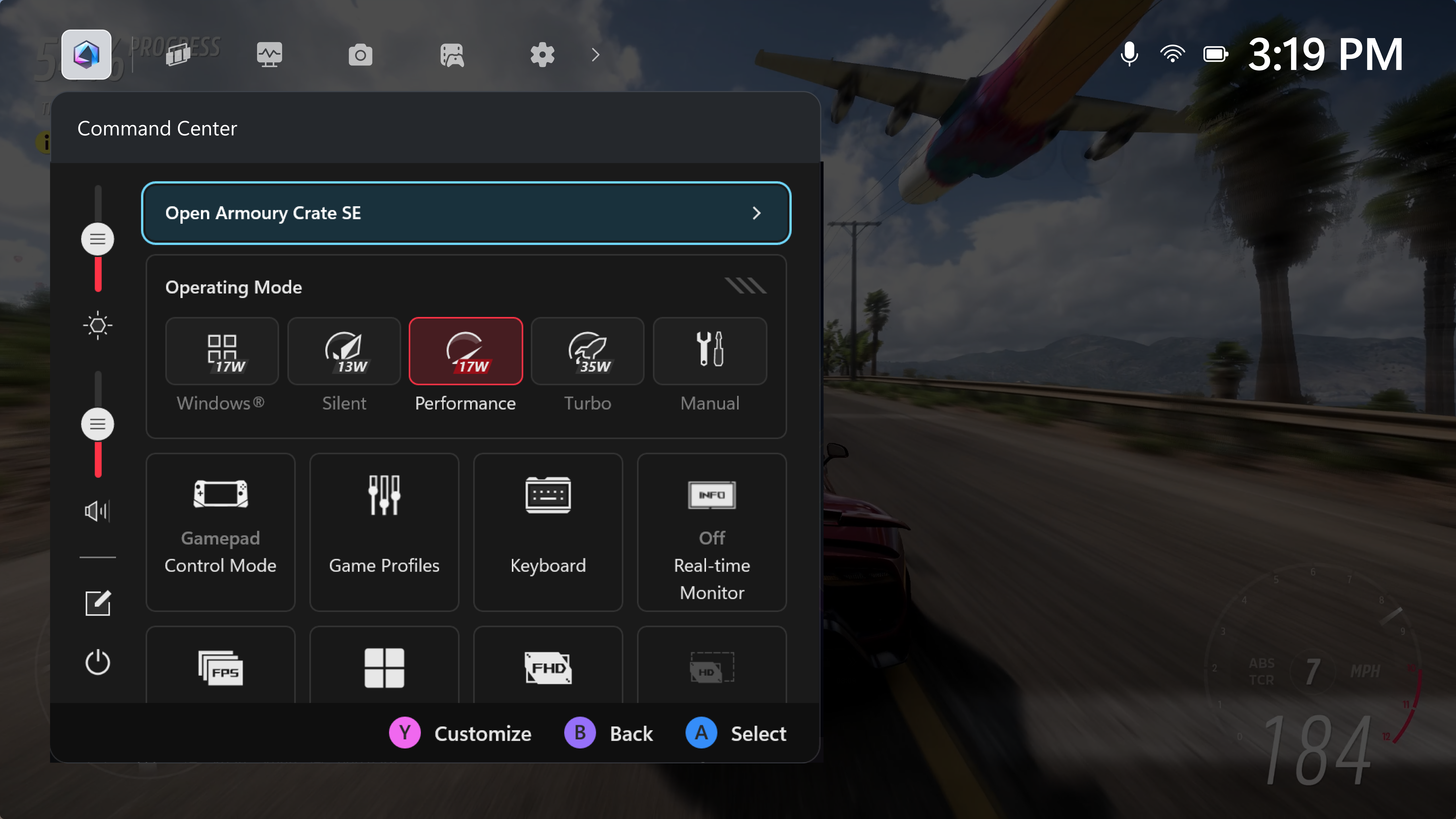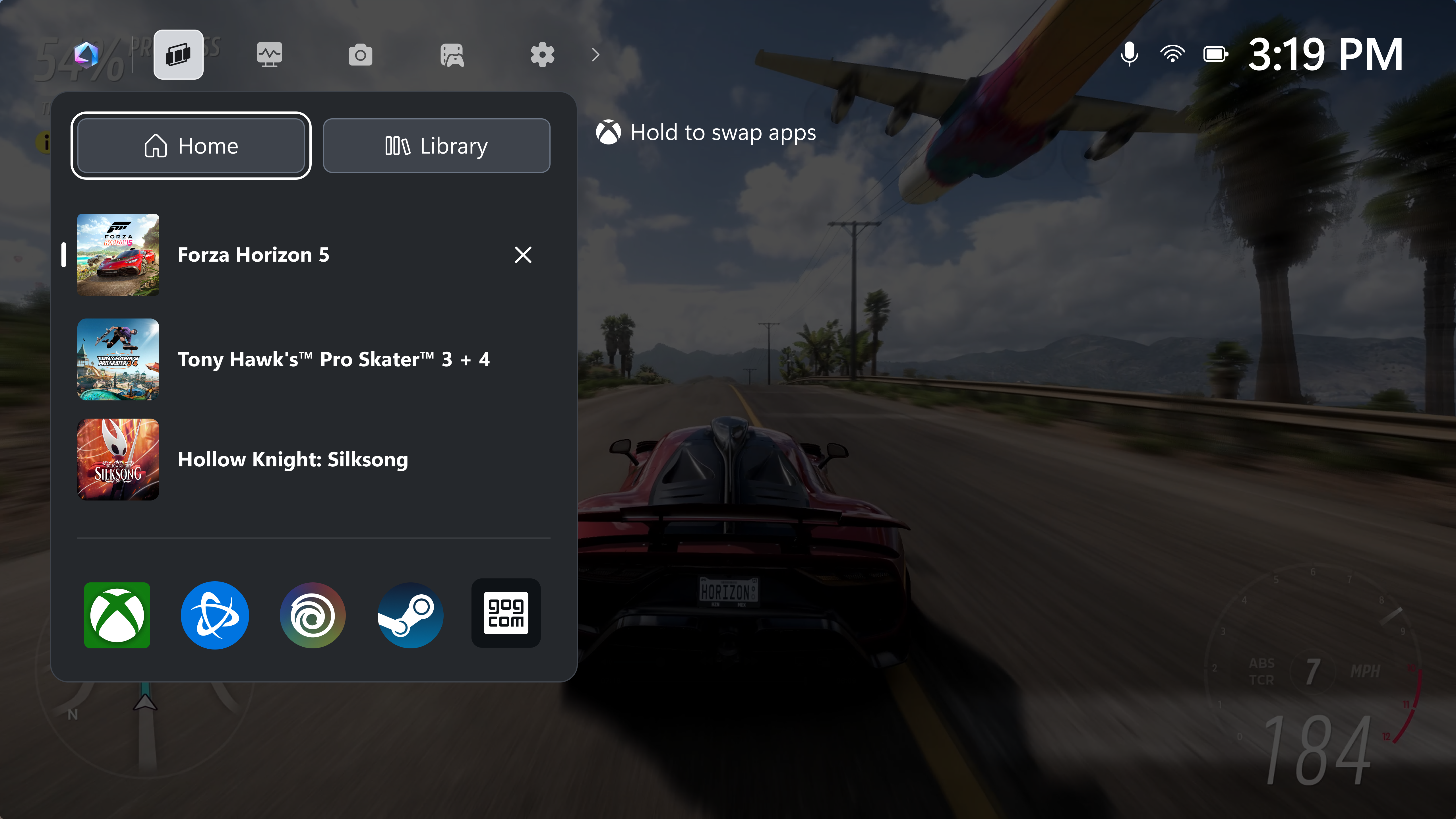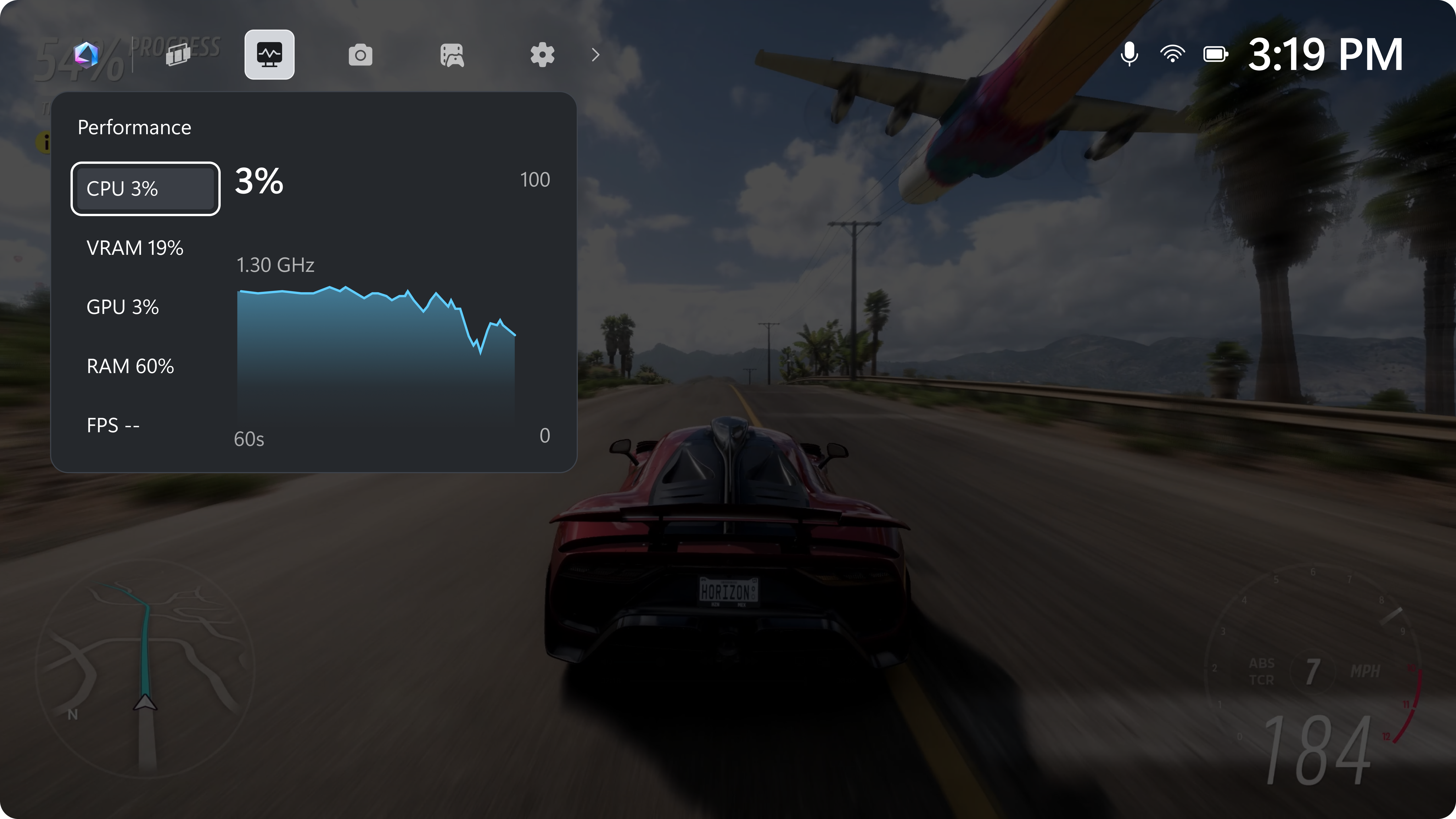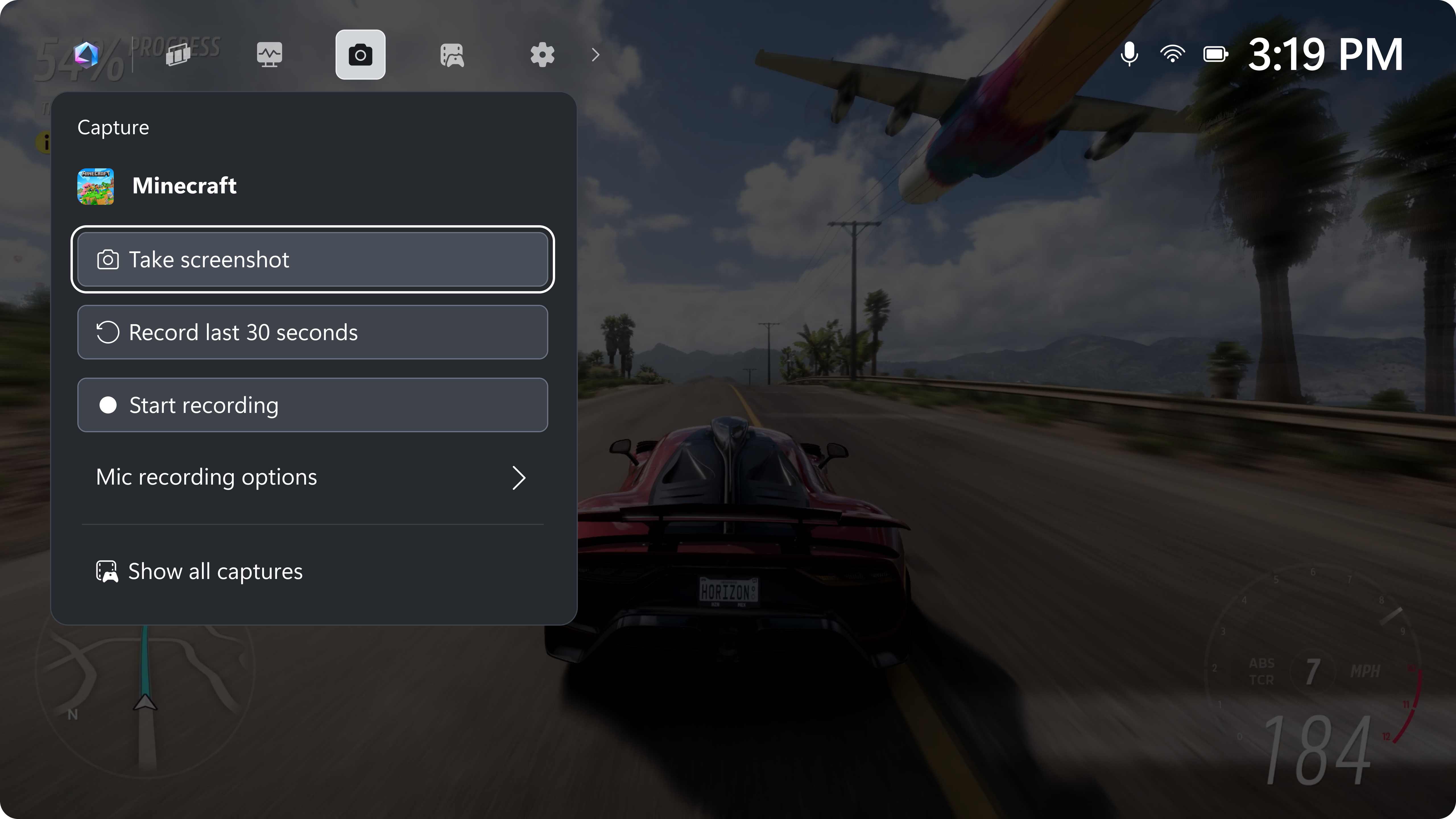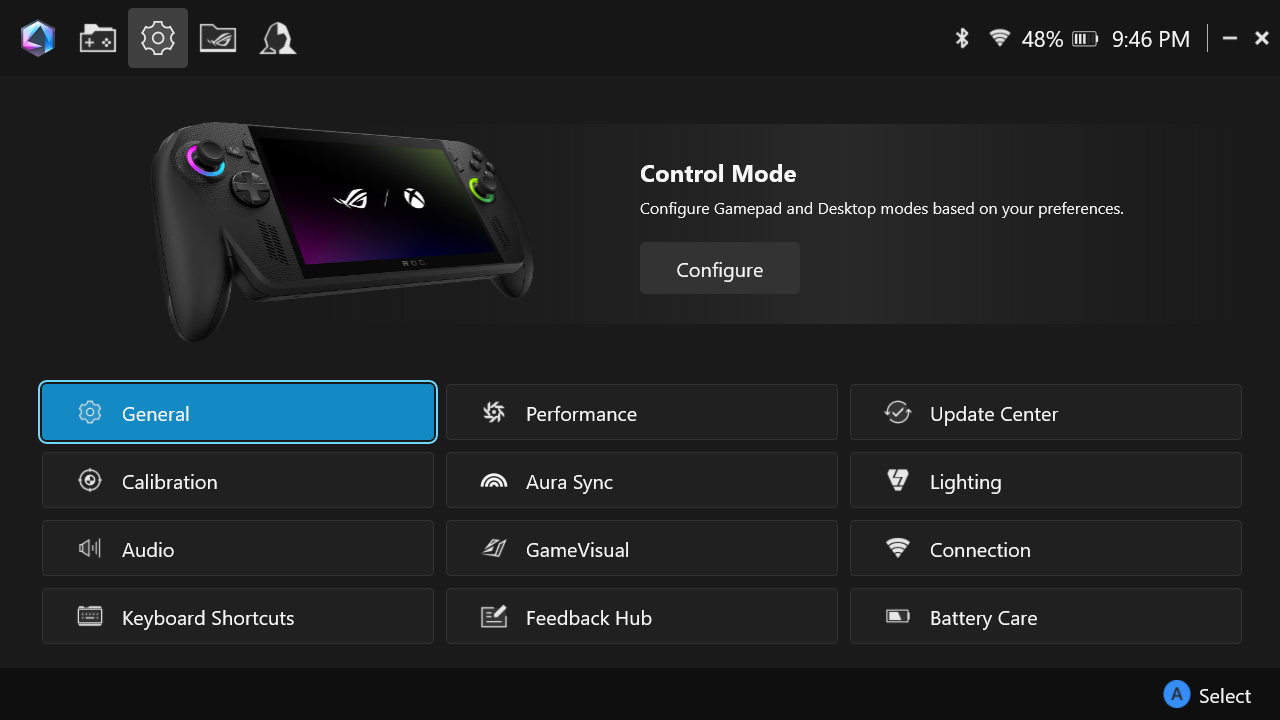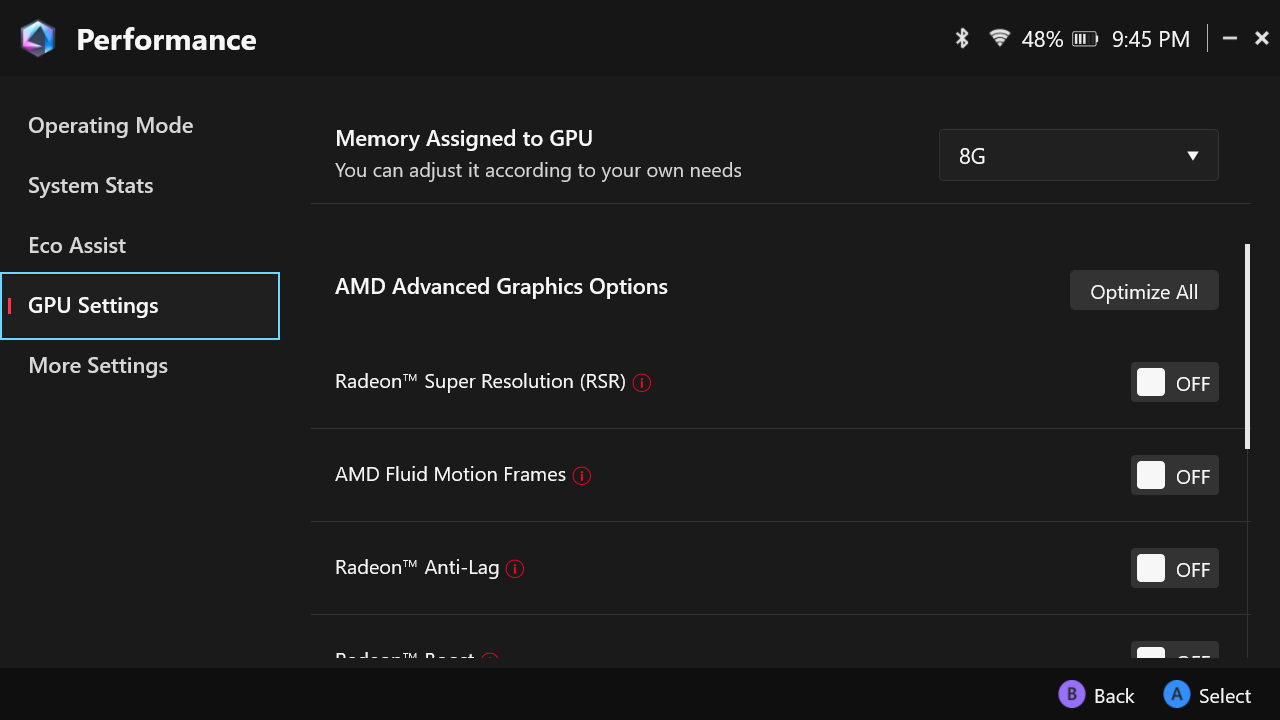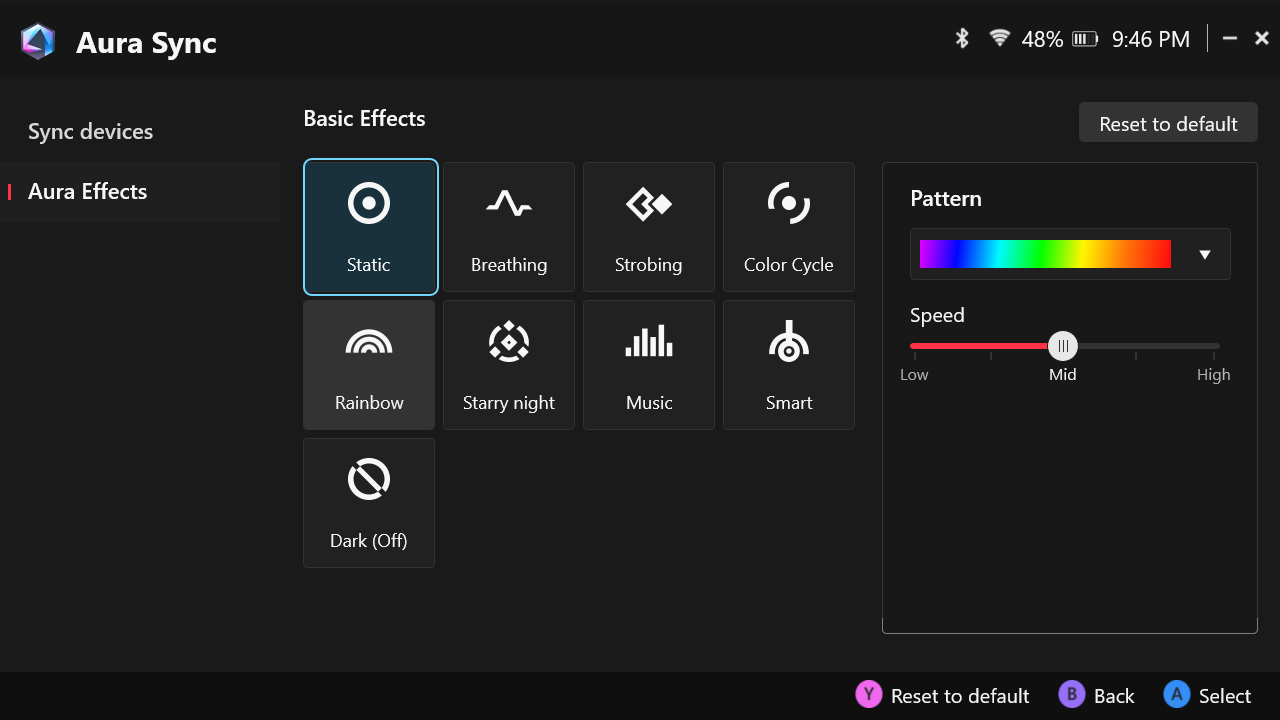Why you can trust Tom’s Hardware
Our expert reviewers spend hours testing and comparing products and services so you can choose the best for you. Find out more about how we test.
Outside of Valve’s Steam Deck, the weakest link in PC gaming handhelds has been Windows 11. Time after time after time, Windows 11’s lack of a true gaming-first mode has made it just short of a dealbreaker even on some of the best PC gaming handhelds.
But when Asus teamed up with Xbox on the Asus ROG Xbox Ally X ($999.99 as tested), it didn’t just mean new hardware with the AMD Ryzen AI Z2 Extreme chip and comfortable grips; it also meant a full-screen Xbox mode that is easy to navigate with a controller and even hides some of the components from Windows 11 that can slow down gaming. It doesn’t have Steam Deck levels of polish, but it’s a revelation compared to the standard Windows desktop.
Reviewer’s note: Our ROG Xbox Ally X came without a final build of the Xbox Full Screen Experience. My first hours with the device were spent setting it up through my Xbox Insider account and installing the latest drivers and BIOS updates, which customers won’t have to do. Still, that means there could be a few changes in the final software, including what should be an improved device setup experience. If we learn of any major changes, I’ll amend this review.
Design of the Asus ROG Xbox Ally X
The Xbox controller is effectively the default controller in PC gaming (other than a mouse and keyboard). So it’s honestly a bit surprising it’s taken this long for a major PC company to copy that gamepad’s comfortable prongs and adapt them to a gaming handheld. It worked for the PlayStation Portal!
Otherwise, though, this Ally looks much like the 2024 Ally X that came before it, with an angular design, plenty of ROG branding, and dedicated buttons for Asus’ Armory Crate. Other than an Xbox button, which Windows 11 handhelds have desperately needed for a while now, there is nothing that makes this feel like an Xbox based on Microsoft’s current console designs (although there is a repeating ROG XBOX pattern in tiny print on the device). If Asus had released this design without calling it an Xbox, I’d be none the wiser. It has a blacked-out color scheme with hints of red on the buttons. I would’ve liked to see the Xbox-colored buttons on the vanilla ROG Xbox Ally.
The prongs feel great. This is the most natural a handheld has felt in my hand so far since the Steam Deck. These grips do make the system wider than some other systems, however, which makes it a bit bulky for travel. I was surprised at how good the system felt in my hands. It’s wide in a way that makes it look like it would be awkward, but the weight is distributed very evenly, and I was comfortable even for long play sessions. It really does feel like you’re using a controller.
Other than that, the general look of the system is almost identical to the ROG Ally X from 2024. You get a very classic Xbox layout here, with ABXY buttons, offset joysticks, and a D-pad sitting on a disk. These are not, however, identical to what you see on an Xbox wireless controller, with all of the Asus ROG styling. I love the rubberized coating around the edges of the joysticks’ caps (that reminded me of an Xbox controller), and the buttons are clicky and tactile, if a bit loud. Each joystick is surrounded by a moat of RGB light, which you can customize in Asus’s Armoury Crate software. Unlike the Lenovo Legion Go 2, there’s no sign of Hall Effect joysticks here.
There are standard bumpers and triggers, though the new Xbox-branded Ally systems use what Xbox calls “impulse” triggers with motors for vibration. Asus notes that these are Hall Effect triggers, so at least they’re using that tech somewhere! The bumpers feel a bit cheap for my liking, with clicky plastic, and the trigger vibration, though kind of fun in racing titles like the Forza Horizon series, isn’t terribly powerful.
There are just two macro buttons, one on each side of the rear of the device. That’s fine for me, but some people may prefer the Legion Go 2’s three buttons or the four on the back of the Steam Deck.
The Xbox button is to the right of the left thumb stick. This is as good a place for it as any, and never got in my way. On the left side of the screen are buttons for Armoury Crate and the View button, while the right side features a button to bring you to your library (or, with a long press, call up Copilot) and the standard Menu button.
What there isn’t is a touchpad. If you want one, you’re better off looking at the Steam Deck. I like touchpads, but their absence here is far from a dealbreaker for me, and I didn’t really miss them.
On top of the system, there are two USB Type-C ports: one with USB4 and the other using USB 3.2 Gen 2. The USB4 port is Thunderbolt 4 compatible, and I had no issue plugging it into a Thunderbolt dock to play games on my monitor. There is also a microSD card slot, a 3.5 mm headphone jack, and a fingerprint reader built into the power button. All of the ports are on top.
Like the previous Ally, there are vents in the back of the system between the macro buttons. That brings cool air in to chill the processor, which is then ejected out of the top of the system.
The Xbox Ally X weighs 1.58 pounds, which feels substantially lighter than the Lenovo Legion Go 2’s 2.03 pounds. It’s a slight bump over the original Ally X (1.49 pounds), while the Steam Deck OLED is lighter than its Windows-based counterparts (1.41 pounds).
If you include the prongs (and the prongs are permanently attached, so you have to), the Ally X measures 11.42 x 4.76 x 2.00 inches, though it’s 1.08 inches deep at its thinnest point. That means that it’s technically thicker than the Lenovo Legion Go 2 (11.64 x 5.38 x 1.66 inches), though it doesn’t feel as hefty.
The original Ally X measured 11.02 x 4.37 x 1.45 inches, so this iteration is larger all around, while the Steam Deck OLED is still the widest option at 11.73 x 4.6 x 1.97 inches.
The system comes with a small cardboard stand in the box. I’d rather it come with a carrying case, like the Steam Deck and Lenovo Legion Go 2. Instead, you have to pay an extra $70 if you want an official case for this handheld.
Asus ROG Xbox Ally X Specifications and Components
Asus is using the AMD Ryzen AI Z2 Extreme. This chip is almost identical to the regular Ryzen Z2 Extreme we saw in the Legion Go 2, except that it has a 50 TOPS NPU on board, as well as three Zen 5 cores and five Zen 5c cores. The Z2 Extreme has a max boost clock of 5 GHz on the Zen 5 cores, (3.3 GHz on the Zen 5c cores) and a base clock of 2 GHz. That max boost is actually 0.1 GHz slower than the Z1 Extreme.
The Z2 Extreme goes up to 35 watts with its configurable TDP. Here’s how Asus uses that with its performance modes, with comparisons to previous models:
| Row 0 – Cell 0 | Asus ROG Xbox Ally X | Asus ROG Ally X (2024) | Asus ROG Ally (2023) |
Silent Mode | 13W | 13W | 10W |
Performance mode | 17W | 17W | 15W |
Turbo mode – plugged in | 35W (25W unplugged) | 30W | 30W |
Whether you need an NPU in a gaming handheld is debatable. I tried it with Microsoft’s Gaming Copilot, but considering it was often wrong and unhelpful about what to do in games, the NPU is more for upcoming features regarding AI-powered upscaling.
There’s a 16-core GPU using integrated Radeon RDNA 3.5 graphics. Asus has opted for 24GB of RAM, the same as in the original Ally X but less than the 32GB in the Legion Go 2. The 1TB M.2 SSD is in a standard M.2 2280 form factor. And the 80 WHr battery is identical in size to the cell used in the original Ally X.
Processor | AMD Ryzen AI Z2 Extreme (8 cores, 16 threads, 15-35W cTDP), Up to 50 TOPS NPU |
Graphics | AMD Radeon RDNA 3.5 graphics (16 cores) |
Memory | 24GB LPDDR5x-8000, soldered |
Storage | 1TB PCIe 4.0 NVMe M.2 2280 SSD |
Display | 7-inch, 1920 x 1080, 120 Hz, IPS, touch |
Networking | Wi-Fi 6E, Bluetooth 5.4 |
Ports | USB4 Type-C (Thunderbolt 4 compatible), USB 3.2 Gen 2 Type-C, 3.5 mm headphone jack, microSD card reader (UHS-II) |
Battery | 80 WHr |
Power Adapter | 65 W |
Operating System | Windows 11 Home |
Dimensions | 11.42 x 4.76 x 1.08 ~ 2.00 inches (29.0 x 12.1 x 2.75 ~ 5.09 cm) |
Weight | 1.58 pounds (715 g) |
Warranty | One year |
Price (as configured) | $999.99 |
Gaming and Graphics Performance on the Asus ROG Xbox Ally X
The Ryzen AI Z2 Extreme has a 16-core integrated GPU with RDNA 3.5 graphics. The CPU and GPU have a shared memory pool, which defaults to 8GB of memory assigned to the GPU in Asus’s Armoury Crate SE software. You can customize this, but we ran it at the out of the box settings.
By default, the system runs in a 25W performance mode while unplugged and a 35W turbo mode while plugged in. Again, we stuck to these values in our testing. We ran games at both 720p and 1080p. In our comparisons, the Legion Go 2 and Steam Deck were tested at 1280 x 800 and 1920 x 1200 to fit their 16:10 screens.
Using the Xbox Full Screen Experience should free up some memory and provide performance advantages, as it doesn’t load some Windows components. We benchmarked games through the FSE, with the exception of our stress test, which requires additional logging software.
In my spare time with the Xbox Ally X, I played Marvel’s Midnight Suns, mostly on battery power. At 720p and medium settings, the game ran between 75 and 111 FPS in missions, though when exploring the Abbey, it was sometimes closer to 60 FPS.
I also tried Alan Wake 2, which I couldn’t run on handhelds with the Z1 Extreme. Here, it worked, albeit with some serious caveats. With the screen at 720p and using a 640 x 360 performance render resolution with FSR2 upscaling, the game ran between 32 and 53 FPS is a nightmare version of New York. Down in the subways, away from the open world level, the game hit the 60 FPS cap I had invoked to save the battery. But the game generally looked terrible and blurry from the low resolution.
On the Shadow of the Tomb Raider benchmark (medium settings, DX12), the Xbox Ally X hit 64 FPS at 720p plugged in and 79 FPS unplugged. At 1080, those boosted to 45 and 52 FPS, respectively. Those results are similar to the Legion Go 2, and show a nice but not extraordinary bump over the Asus ROG Ally X.
Cyberpunk 2077’s Steam Deck preset showed off the system’s power when plugged in, where it hit 63 FPS at 720p and 40 FPS at 1080p. Those both beat the Legion Go 2, though that had the disadvantage of having to push a few more pixels to power its 800p screen.
Red Dead Redemption 2 (favor performance, Vulkan), the Xbox Ally X showed off gains at 720p while unplugged, hitting 66 FPS. It scored almost identically to the Legion Go 2, but showed upticks over the original Ally X all around.
Borderlands 3 (medium, DX11) was the only misstep. At 59 FPS at 720p unplugged and 68 FPS plugged in, it came in behind the Legion Go 2 at 800p. 1080p performance, however, was comparable. In fact, at 720p, the Xbox Ally X had effectively no gains over the original Ally X in this game, though 1080p performance was improved.
Now that we’ve seen handhelds getting slightly more power, we’ve upped our stress test. It’s still Metro Exodus running 15 times at 720p to simulate about half an hour of gameplay, but we’ve moved from low to medium settings. The Xbox Ally X achieved an average frame rate of 63.44 FPS on the benchmark.The consistency across the 15 runs suggests the cooling is adequate for the chip.
The Xbox Ally X’s three Zen 5 cores ran at an average of 3.24 GHz during the stress test, while the Zen 5c cores hit 2.15 GHz.
Windows 11 and Armoury Crate on the Asus ROG Xbox Ally X: Is it an Xbox?
The Xbox Full Screen Experience is significantly better for handhelds than standard Windows 11.
You boot straight into a version of the Xbox app featuring a home screen with recently played games, though like a standard Xbox, the app also advertises game deals, Game Pass, and has curated lists of games. The most important part is your library (there’s even a hardware button for it), which brings everything together from Xbox and launchers like Steam, Epic Games, Battle.net, GOG Galaxy, and Ubisoft Connect.
Wherever you are in the system, you can see a miniaturized version of this experience by hitting the Xbox button, which shows recently played games, launchers, quick settings, your friends list, and most of the features from Xbox Game Bar on PC.
Most importantly, loading directly into the Full Screen Experience means that Windows doesn’t even bother loading certain components of the OS that aren’t used for gaming, making it lighter, saving RAM, and putting more resources toward games. The handheld even came with Steam preinstalled, booting right into big picture mode. That’s a nice welcome mat for PC gamers, though I later did end up in the traditional Steam interface upon further boot ups.
Launchers, however, don’t always work well. For instance, if you go into Steam’s Big Picture mode, you’ll get a great experience with the Xbox controller. But if you end up in Epic Games, as I did after quitting games like Borderlands 3 and Marvel’s Midnight Suns, I found myself in an environment where I had to use this PC-style launcher with touch, as there was no mouse control. Even then, when I had the system at 720p, I’d have a gray box around the launcher, making it even harder to hit the touch targets. I had similar issues launching Cyberpunk 2077 from Steam, which forces you to go through CD Projekt Red’s launcher. When you pick a game from the Xbox menu, launchers still have to boot and run in the background, which sometimes leaves you with a minute or so of hangtime. You don’t have these problems when playing games from the Xbox Store.
Games from the Xbox Store also get other bonuses, like nicer artwork and, if you buy from the Xbox Store, analysis of how well the game will play on your PC.
You can still boot into the desktop (and load all of those extra Windows components upon doing so). If you want to use this system as a standard Windows 11 PC, there’s nothing stopping you. It has all of the flaws of other gaming handhelds running Windows, but I’m glad the option is still there. I’m sure there will be at least some people who use the handheld with a keyboard and mouse or just want to tinker.
There are a number of waypoints in and out of the Full Screen Experience, but they feel bolted on to the Xbox app. But the sheer number of ways to get back into it means most people won’t get lost. If you do go to full screen Windows 11, it will load the rest of the OS components, likely affecting gaming performance, so you’ll want to restart when switching between the Xbox FSE and Windows (the system encourages you to do so).
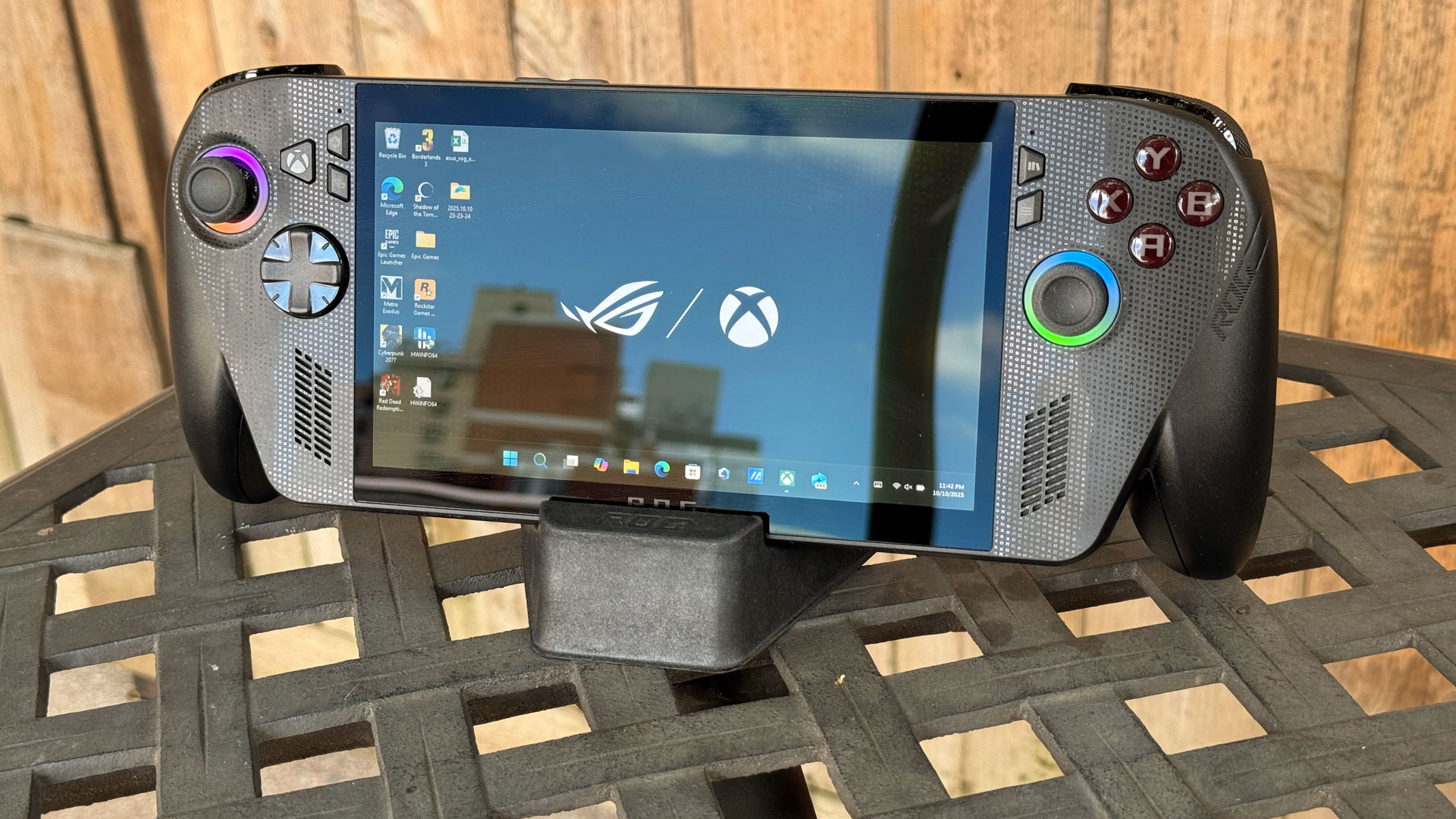
And there are still aspects of Windows you can’t control. Install a game or launcher that Windows runs through User Account Control? UAC doesn’t pop up on an Xbox, but it still happens here. Asus also includes some unnecessary software, like MyAsus and GlideX for screen sharing, which feel out of place on a gaming handheld.
One of SteamOS’s biggest advantages is a rating system that gives you an idea of how well a game works on the Steam Deck. Microsoft is doing something similar in the Xbox FSE, called the Handheld Compatibility program. Games are labeled as “Handheld Optimized” with a green checkmark, or “Mostly compatible” with a blue icon, suggesting you need to change some settings to get the game to run well. These badges are buried in the Xbox Store, so you won’t see equivalents for other launchers. But Microsoft does keep a list of games it and studio partners have tested for handheld compatibility.
Asus’s Armoury Crate SE is still here, both as a full application and as a smaller “Command Center” built into the Xbox interface and available through Windows 11. It’s important as you switch through performance modes, change wattage to the processor (which can greatly affect battery life), and make other adjustments. (It is nice to have it baked into the Xbox FSE, and accessible easily through the Xbox button). The full Armoury Crate SE software does double up on some features though, including its own unified game library.
All of this leads to one question: Is the new Ally X an Xbox? For almost a year, Microsoft has been pushing a campaign that anything can be an Xbox, from laptops to car entertainment systems to phones – and now, gaming handhelds running Windows.
If you’re coming from using an Xbox Series X or Series S, though, this is a fundamentally different experience in many ways. While Xbox Play Anywhere features over 1,000 games and lets you share save states and achievements, it also assumes you bought those games from the Microsoft Store. And plenty of games don’t support Play Anywhere, including some of Microsoft’s own. (It’s nice to see that Doom: The Dark Ages got support after Doom Eternal didn’t).
Microsoft needs to get to a point where all Xbox games are playable anywhere with this support to compete with the user experience Valve offers on Steam Deck. It’s tough to call something an Xbox when it doesn’t play every Xbox game. That will certainly confuse some people. Xbox gamers will also get their choice of using Game Pass or using Remote Play from their console, so there’s a lot of flexibility here.
But as a PC handheld, this system also supports Steam, Epic Games, and every other launcher under the sun. All of those launchers, and all of the games within them, have far more settings to tinker with than ever before. Add in the fact that Asus’ software gets deep into TDP, and this is a system with far more options than any Xbox owner ever had before. Enthusiasts will love that. But I also think there will be a number of console devotees who wonder how the heck this thing is an Xbox. It sure feels a lot more like an Asus gaming PC.
Microsoft is promising a bunch of upcoming features early next year, but we can only judge the Ally X on what’s available today. Promised updates include automatic super resolution to use the AI Z2 Extreme’s NPU to upscale games at the system level with no changes needed in game, as well as a game save sync indicator to make sure your save is stored, and improved library management for SD cards, making it easier to store and manage your games from the FSE.
Even without those, though, the Xbox FSE makes the Xbox Ally X the best PC gaming handheld with Windows because it’s so much easier to use, despite the fact that Microsoft clearly has work to do to make launchers less janky and make the whole thing more full-featured. None of this is as polished or as easy as Valve’s SteamOS, but it’s significantly closer than using the regular Windows 11 UI. I can’t wait for Microsoft to let every gamer with a handheld get a better experience than they do on the standard Windows 11 desktop.
Display on the Asus ROG Xbox Ally X
Asus is using a 7-inch, 1920 x 1080, IPS touchscreen that runs up 120 Hz on the Xbox Ally X. If that sounds familiar, it’s because it’s probably the same screen on the previous Ally X. The 16:9 aspect ratio differs from what Valve and Lenovo have done, with taller 16:10 screens that also use OLED technology. In fact, this screen doesn’t support HDR.
In general, the screen looks good. In Marvel’s Midnight Suns, the Abbey is filled with colorful characters. Agatha’s altar includes many blue flames (and, oh, yeah, Agatha Harkness’s blue ghost), which created a haunting effect that contrasted against greenery at night. It doesn’t, however, look anywhere near as vivid as the Lenovo Legion Go 2 I just tested.
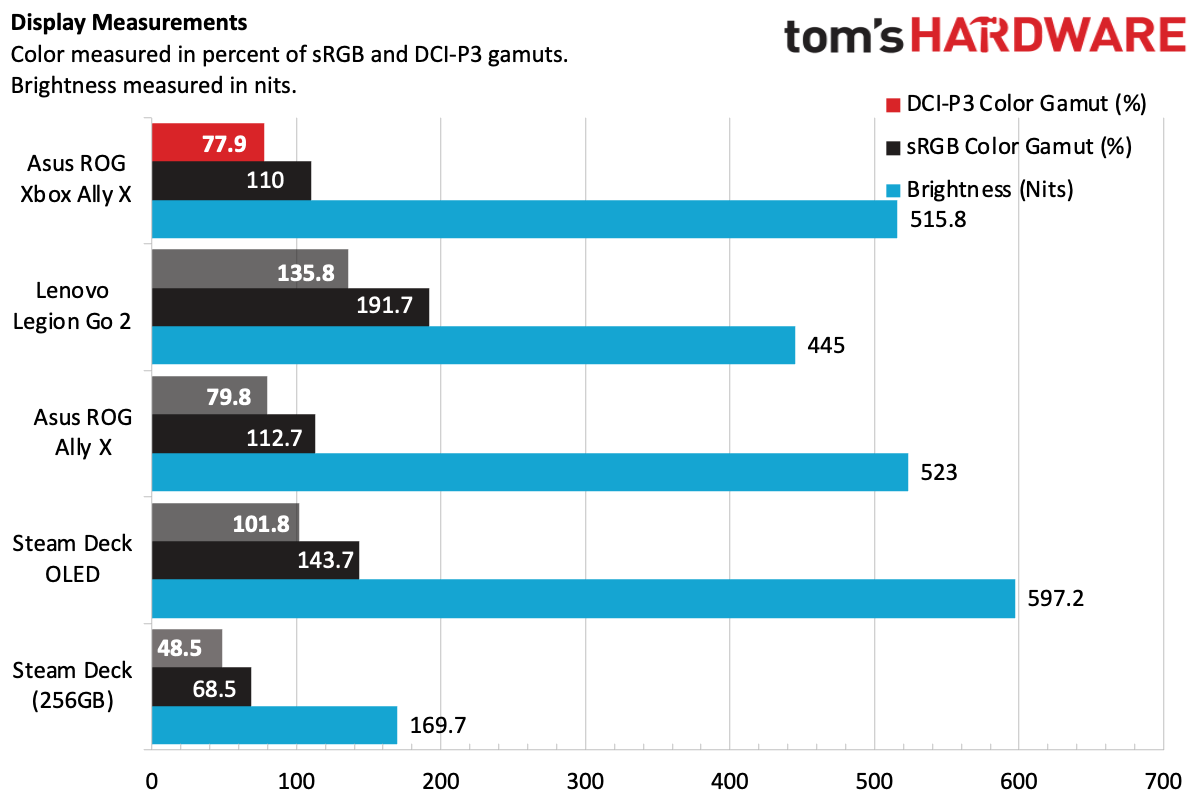
The ROG Xbox Ally X’s screen tested almost identically to the ROG Ally X we tested last year. Given they have the same specs, they’re almost certainly same panel. The Xbox Ally X’s panel covers 110% of the DCI-P3 color gamut and 77.9% of the more challenging DCI-P3 space by volume. That’s easily beaten by the OLED screens on the Legion Go 2 and the Steam Deck OLED.
At 515.8 nits of brightness, this panel is more luminous than the Legion Go 2, though the Steam Deck OLED took the crown at 597.2 nits.
Battery Life on the Asus ROG Xbox Ally X
Battery life on a handheld, like its competitors, is largely dependent on your settings and the game you play. I tend to play games in a way to try to preserve battery life as long as possible. If you play low-impact games like Stardew Valley or even Hollow Knight: Silksong, you may experience longer battery life than the effects-heavy games I tested.
One evening when testing the Xbox Ally X, I played some Marvel’s Midnight Suns with the system in Performance mode. At medium settings at 720p with the screen locked to 60 Hz and 50% brightness, the battery had dropped to 50% after an hour and 32 minutes.
When I played Alan Wake 2, I kept the same 17W Performance mode, 50% brightness, and 60 Hz refresh rate. At 720p using FSR2 upscaling on a performance-focused 640 x 360 render resolution and low settings preset without ray tracing, the handheld hit 50% in an hour and 35 minutes.
If you extrapolate from these, those suggest about 3 hours on battery, and that’s with the limitations I put in place. That seems about standard when compared with the Legion Go 2.
Audio on the Asus ROG Xbox Ally X
The twin speakers on the Xbox Ally X are front facing, playing the sound right toward you. This is the optimal location, similar to what you find on the Steam Deck OLED. Some other handhelds have the speakers facing out of the top, away from you.
I used some of my time with the ROG Xbox Ally X to play a bit of Tetris Effect, which I had through Xbox Play Anywhere. The game sounds best with headphones, but the speakers did a solid job. The “Prayer Circle” level in journey mode features bells and xylophone sounds, which were clear and focused. Some deeper bass sounds, like gongs, were muted at best, however.
In Marvel’s Midnight Suns, the speakers swelled with orchestral music during a battle, and kept the dialogue clear even over whirring Hydra helicopter blades. And the game got nice and loud, too, easily filling a whole room.
Heat on the Asus ROG Xbox Ally X
We measured skin temperatures while running our Metro Exodus stress test. Like other handhelds we’ve tested, the design ensures your hands don’t touch any hotspots. The prongs and controls ran from 84 degrees Fahrenheit at the furthest point to 90 F closer to the screen. On the top, the hottest point was at the exhaust vent, which reached 113.7 F. On the rear, the hottest point was near the intake vent, far enough from the two back buttons that you wouldn’t place your hands there.
Internally, the CPU package measured an average of 74.7 degrees Celsius, while the integrated graphics reached 70.59 C.
Upgradeability of the Asus ROG Xbox Ally X
Here’s one way in which the ROG Xbox Ally X is definitively more like a PC than an Xbox: You can crack it open and upgrade it. The back of the system is held on with eight Phillips-head screws. There are five screws on the back and three on the bottom. Of those, the top middle screw on the rear is captive; the rest all come out.
You’ll have to pry carefully from the top and all the way around the sides of the controllers to get the back off. It can be nerve-wracking and time-consuming, as there are a lot of plastic clips to disengage. But go slow — there’s a ribbon cable connecting the back to the motherboard to control the M1 and M2 buttons. I would love to see a design in the future with a door that leads directly to the SSD (perhaps similar to what Microsoft has done on some Surface designs) so you don’t have to deal with so many screws and tabs. For those without any DIY PC experience, adding storage with the microSD card slot may be the way to go.
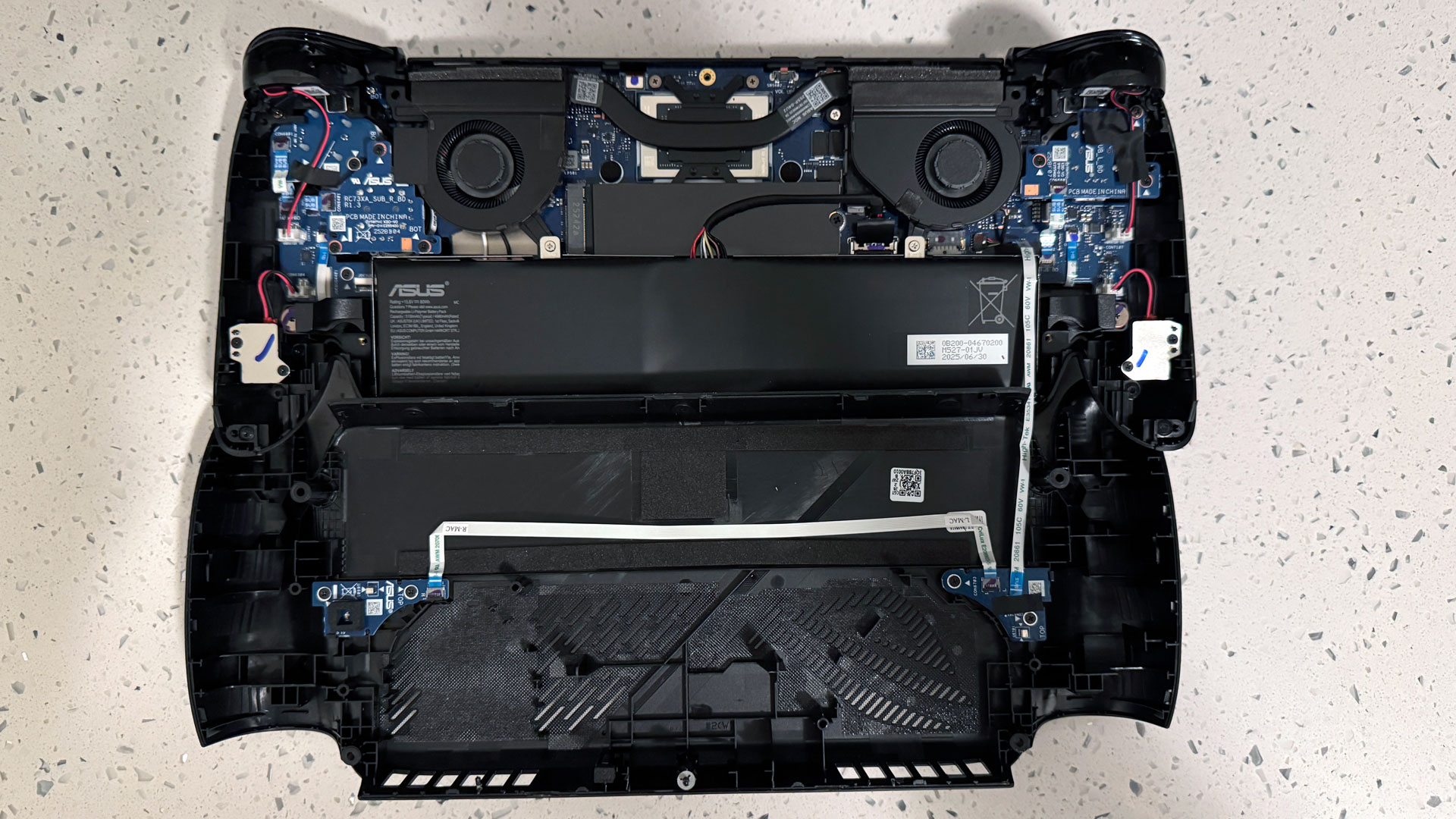
The major component you can upgrade is the standard M.2 2280 SSD, which is right at the center when you open the system. The battery cable runs over the SSD, and while you’d probably want to disconnect that before doing work anyway, you’ll have to do so to have room to remove the existing drive.
Like the original Ally X, you can see the modular thumbsticks. Since Asus isn’t using Hall Effect joysticks, these will probably, eventually, be prone to drift. Asus didn’t sell replacement sticks for the initial Ally X, but I’d love to see them do it for this system.
Asus ROG Xbox Ally X Configurations
The Asus ROG Xbox Ally X comes in a single configuration, with a 7-inch, 1080p display, AMD Ryzen AI Z2 Extreme processor, 24GB of RAM, and a 1TB SSD. It costs $999.99, up from $799 on the 2024 Ally X with a Z1 Extreme. That’s a big jump for the new processor and slightly new design.
There is another model, the Asus ROG Xbox Ally, which ditches the Xbox Ally X’s blackout color scheme for a white controller and colorful buttons. That system, which costs $599.99, uses an AMD Ryzen Z2 A processor, which on paper is similar to what you can find in the Steam Deck OLED. It also has 16GB of RAM and a 512GB SSD.
Bottom Line
The Asus ROG Xbox Ally X makes two things very clear:
1. More handhelds need controller-style prongs.
2. Windows 11 on gaming handhelds has a chance.
The Xbox Ally X has superior ergonomics to every other Windows handheld on the market, and will be more comfortable for some than the Steam Deck, which until now has been the best in this area. It looks a little silly, but controllers have those grips for a reason. Add in some great weight-balancing, and you have a comfortable gaming handheld. Too bad it doesn’t come with a case to carry it around in.
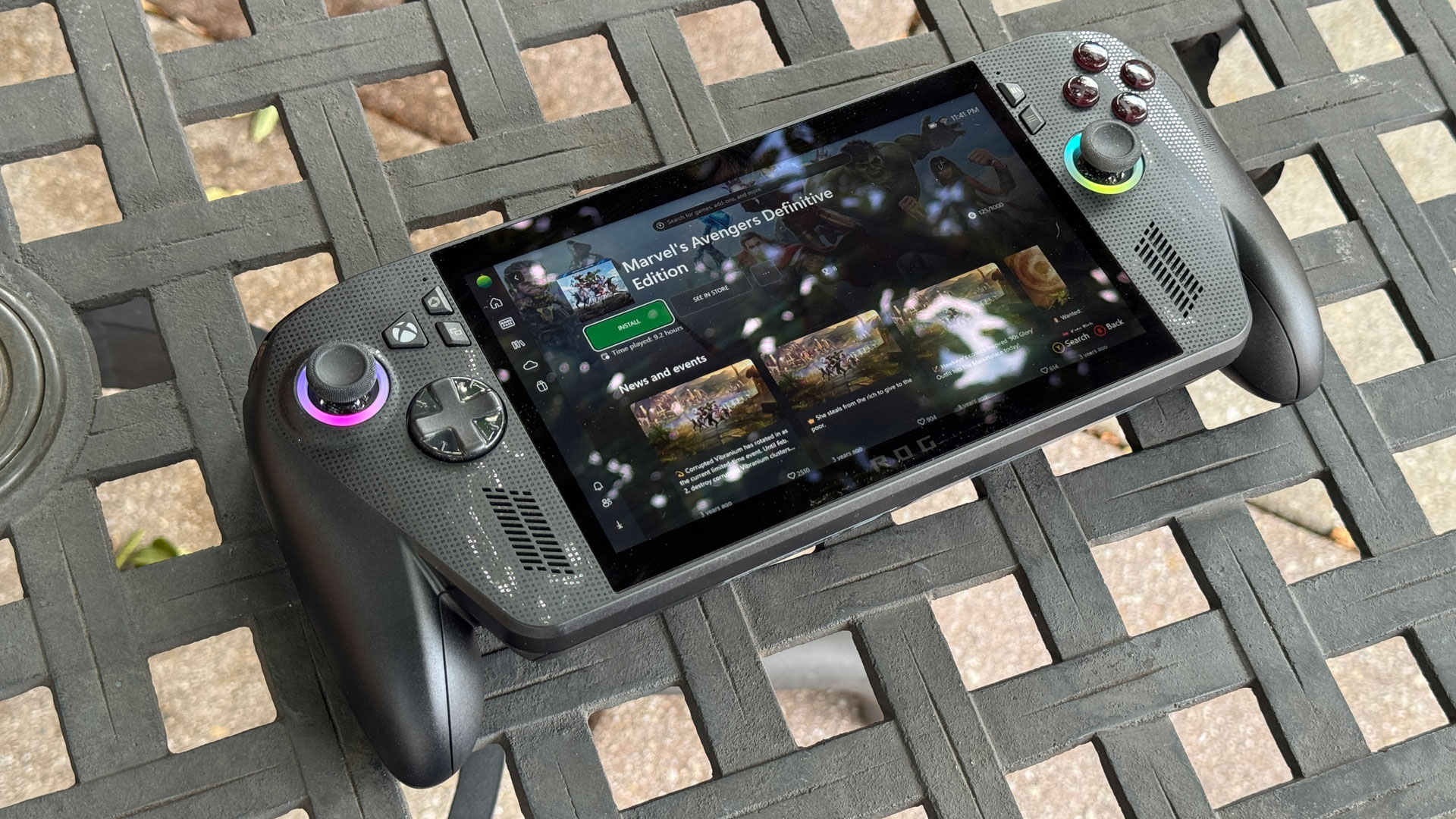
The performance of the Ryzen AI Z2 Extreme is strong, but I’m not sure it’s such a jump that if you already have an Asus ROG Ally X with Z1 Extreme, you need to upgrade.
At $999.99, this is a pricey handheld. Still, there are more fully featured options out there. If you’re willing to skip the Xbox Full Screen Experience (for now), the Lenovo Legion Go 2 adds detachable controllers with Hall Effect joysticks and a gorgeous OLED screen, along with more RAM. But that device is bigger and heavier, and is even more expensive at $1,349.99. The Steam Deck OLED, which is cheaper at $549 for 512GB and $649 for 1TB, also has an OLED screen, though its chip quite as powerful as the Z2 Extreme.
For now, the Xbox Full Screen Experience is exclusive to the Xbox Ally X. All other things being equal, that’s the big reason to buy this system. Using it is simply easier, even if Microsoft has plenty of rough edges to clean up.
If you’re just now jumping into the gaming handheld market and want something that just plays games and runs Windows, this is the one to get. It’s comfortable and is finally starting to get close to the ease of use that Valve offers with SteamOS. When the Xbox Full Screen Experience becomes available more widely, however, the field may blow open.

